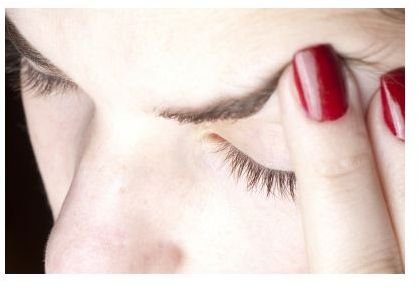Dealing With Alternating Bouts of Anxiety and Depression - Part One
GAD & MDD
Both general anxiety disorder (GAD) and major depressive disorder (MDD) are recognized conditions per the American Psychiatric Association (APA). In an APA study-group challenge as far back as 2007, Kenneth Kendler MD, PhD, and others took a look at alternating bouts of anxiety and depression.
To come to factual conclusions, Kendler looked at genetics, situational circumstances, biology, treatment and predictors. Kendler concluded that both GAD and MDD have similar risk factors and in his words, the study was meant to sway the “house of cards” symptoms those who suffer from generalized anxiety disorder often feel along with overwhelming depression.
Jack Hettema, MD PhD also sought out answers on those suffering from both GAD and MDD to see if they are indeed related. His findings were gender specific; women suffered from both disorders more than men.
Charles Nemeroff. MD, PhD explored the brain circuitry more than the other two and found the dorsal insula (anxiety) and the amygdala (depression) could act in a cross-functional manner causing both GAD and MDD.
As my own psychiatrist often tells his patients, scientists know the least about the fantastic organ we call the brain—so if alternating bouts of anxiety and depression are indeed possible, how does the sufferer deal with both?
Dealing With GAD & MDD
Most doctors and therapists recommend a combination of talk therapy, group exchanges, and medications to aid in fighting both generalized anxiety disorder and major depression disorder. For people who suffer anxious feelings only in certain circumstances, the “facing your fears” therapy is often employed.
In the long run, however, all the doctors, Nemeroff, Hettema, and Kendler did come to conclusions that the “rolling snowball effect” is indeed present in those who suffer from either disorder. In other words, the prominent disorder often becomes so intense the second disorder may present.
In the real world of suffers (of which I am one), often anxiety can be so overwhelming, symptoms of depression (tiredness, and lack of interest) do seem to follow or often, both anxiety and depression are felt at the same time.
This can make for a tricky situation if you suffer from one or both of these disorders. The anxiety can leave you feeling breathless with heart palpitations along with lack of concentration, while the depression tells your body to sleep and even a special day or event seems meaningless.
So how do doctors and sufferers deal with alternating bouts of anxiety and depression?
Wait it Out or Meds?

Years ago, when my anxiety disorder caused depression, my psychiatrist attempted a fix through sleep deprivation and medication. I was given the drug Ritalin to take with my Klonopin (anxiety) and told to stay awake for 24 hours.
The event that spawned this trial was deep depression and the inability to leave my bed along with intense anxious feelings. While this “trial” didn’t seem to work for me, the doctors mentioned above felt at the end of their studies that while these two disorders are “closely related,” they may also be caused by “stress or internalizing disorders.”
Any of us that suffer from either anxiety or depression knows right off the bat that internalizing is a game we are fond of playing. We can also keep our stress levels high if we don’t practice what we are taught. Indeed the experts found there was “need for further studies of the biomarker data which is available for MDD in patients with GAD.”
Because it normally takes any medicine protocol up to six weeks to achieve its full effects for depression, but anxiety can be quickly tackled with drugs such as Xanax or Klonopin, what are the most effective ways to deal with both GAD and MDD at the same time?
Please continue to Page 2 for more information on dealing with alternating bouts of anxiety and depression.
Be Your Own Guide

Since my early twenties, I have suffered from GAD and at times, bouts of depression. If you feel this is happening to you, first determine if you are really suffering from one or the other. Experts in the field will say any mental health condition that is a constant presence is indeed a disorder compared to those normal stresses or down in the dump feelings everyone experiences.
Often, it will take a mix of talk therapy, group therapy and the old (and often disliked) trial and error of various medications to deliver the desired result—no anxiety and no depression.
With more pharmaceuticals on the market today, scientists and doctors have seen improvements in people that have alternating bouts of anxiety and depression. With the help of these meds, they often stay on an even keel and with therapy, can realistically understand and deal with various symptoms these disorders bring.
Understanding your limitations and disorder(s) are your best army when fighting them. Each of us has methods or various tools that work best. If you find you are having feelings of either intense anxiety or depression and have never had them before, speak with your family practitioner who can guide you to either free help, sliding fee scale assistance, or work with your health insurance to obtain needed help. No one is alone when it comes to GAD or MDD; those that suffer in the dark are truly the ones we must all help and push to gain insight that can change their lives forever.
Above all, know that having both GAD and MDD is possible can be a comfort, and if you find yourself in a well that seems endless, whether you choose the alternative approach or that of medication, there is help, so ask your doctor what he or she recommends to best help the symptoms of these disorders cease.
References
American Psychiatric Association - Comorbidity of Depression and Generalized Anxiety Disorder (June 20-22, 2007) (https://www.psych.org/MainMenu/Research/DSMIV/DSMV/DSMRevisionActivities/ConferenceSummaries/ComorbidityofDepressionandGAD.aspx).
Image Credits:
- Anxious & Depressed (Freedigitalphotos)
- Try Medication (Freedigitalphotos)
- Be Your Own Guide or Get a Guide (Freedigitalphotos)
